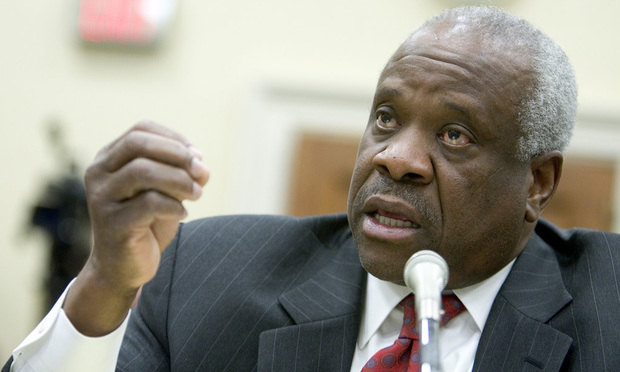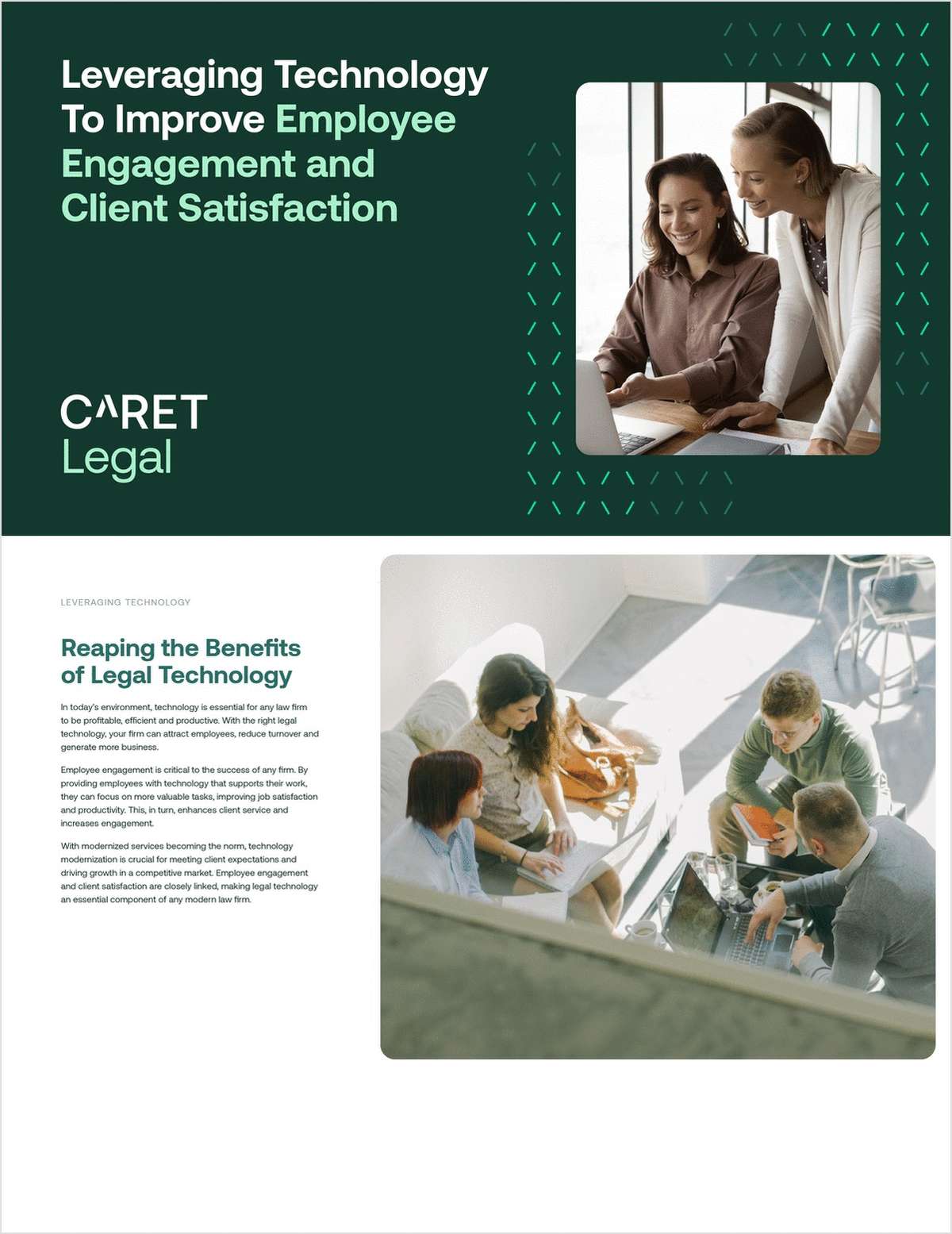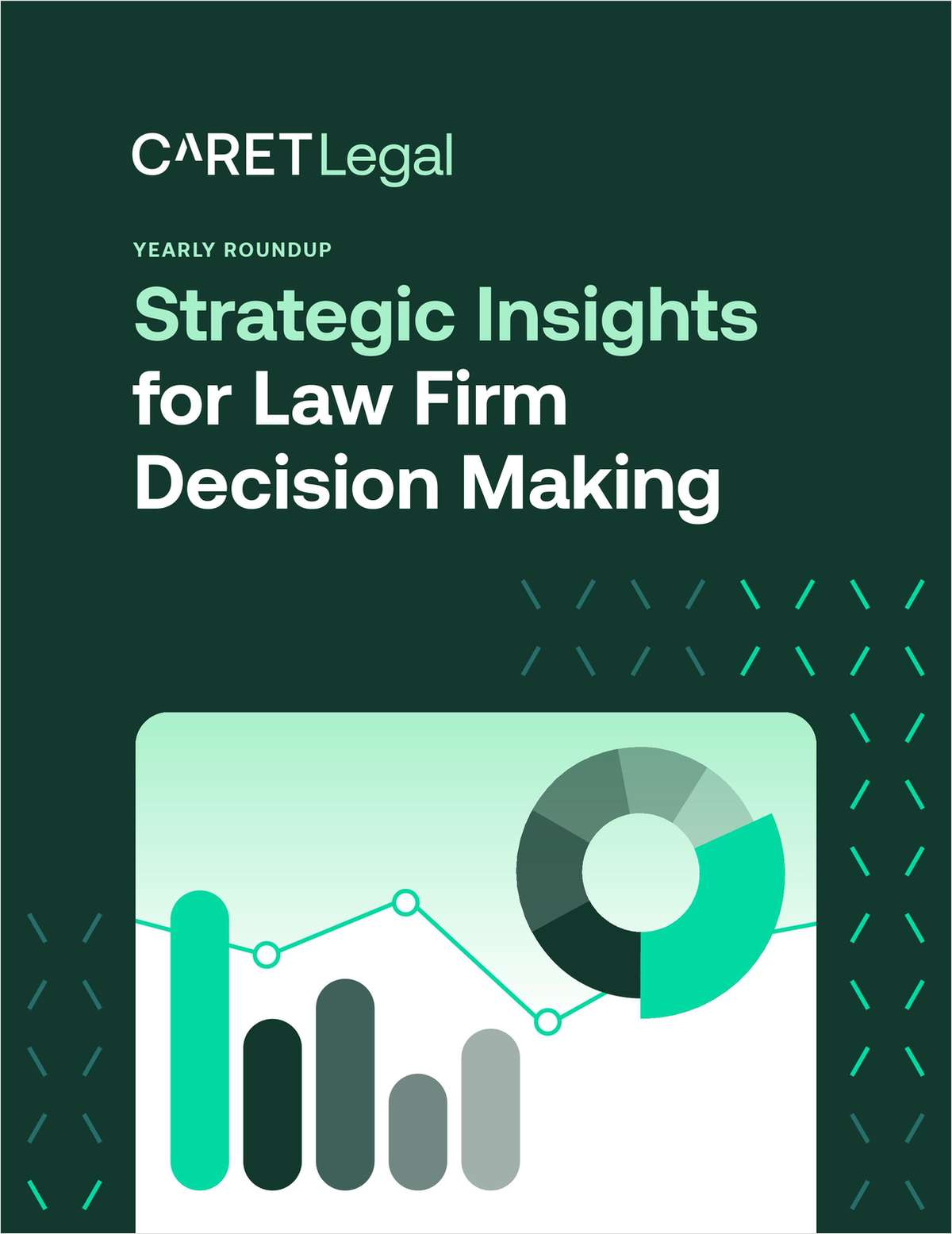Pharma Companies Lose 'On Sale' Dispute in Patent Case
The America Invents Act didn't change meaning of the law, which requires patenting an invention within one year of a public or private sale, the justices ruled.
January 22, 2019 at 01:38 PM
3 minute read
 Justice Clarence Thomas. Credit: Diego M. Radzinschi/ALM
Justice Clarence Thomas. Credit: Diego M. Radzinschi/ALM
The America Invents Act did not make over patent law's “on sale” bar, the Supreme Court ruled Tuesday.
The justices unanimously held that, despite some wording changes in the 2011 law, sales of a new invention, whether public or confidential, will trigger the one-year statutory clock on obtaining a patent.
“Given that the phrase 'on sale' had acquired a well-settled meaning when the AIA was enacted, we decline to read the addition of a broad catchall phrase to upset that body of precedent,” Justice Clarence Thomas wrote for the court.
Helsinn Healthcare v. Teva Pharmaceuticals will disappoint small pharmaceutical operations, which told the court they benefit from the freedom to strike confidential distribution deals before obtaining a patent on new drugs and formulations.
In Helsinn Healthcare's case, the family-owned Swiss company entered into a licensing and distribution agreement with Minnesota-based MGI Pharma Inc. in 2001 for formulations of palonosetron, the active ingredient in Helsinn's drug for treating chemotherapy-induced nausea and vomiting. The deal was contingent on Food and Drug Administration approval, which Helsinn eventually obtained. Only then did Helsinn patent its 0.25 milligram formulation, more than a year after its deal with MGI.
Helsinn argued the America Invents Act clarified the on-sale bar applies only to public sales. Its Williams & Connolly lawyers pointed to language that says an invention can be patented unless it's been “described in a printed publication, or in public use, on sale, or otherwise available to the public.”
Williams partner Kannon Shanmugam argued the addition of “otherwise available to the public” in the AIA made clear that private sales don't trigger the on-sale bar.
But the Supreme Court agreed with Teva Pharmaceuticals Industries Ltd., which was represented by Goodwin Procter partner William Jay, tech companies and a group of law professors led by Stanford's Mark Lemley, which argued the on-sale bar was well-established in Supreme Court and Federal Circuit precedent, and the mere addition of the “otherwise” phrase wasn't enough to overrule all of it.
Thomas' nine-page ruling looked all the way back to the 1829 case Pennock v. Dialogue, which said an inventor may not “sell his invention publicly” and later “take out a patent” and “exclude the public from any farther use than what should be derived under it.”
“Although this court has never addressed the precise question presented in this case, our precedents suggest that a sale or offer of sale need not make an invention available to the public,” he wrote.
And the U.S. Court of Appeals for the Federal Circuit “has made explicit what was implicit in our precedents. It has long held that 'secret sales' can invalidate a patent,” Thomas wrote.
“In light of this earlier construction, we determine that the reenactment of the phrase 'on sale' in the AIA did not alter this meaning,” Thomas wrote. “Accordingly, a commercial sale to a third party who is required to keep the invention confidential may place the invention 'on sale' under the AIA.”
This content has been archived. It is available through our partners, LexisNexis® and Bloomberg Law.
To view this content, please continue to their sites.
Not a Lexis Subscriber?
Subscribe Now
Not a Bloomberg Law Subscriber?
Subscribe Now
NOT FOR REPRINT
© 2025 ALM Global, LLC, All Rights Reserved. Request academic re-use from www.copyright.com. All other uses, submit a request to [email protected]. For more information visit Asset & Logo Licensing.
You Might Like
View All
Ozempic Defendants Seek to Shave 'Tacked On' Claims From MDL Complaint
3 minute read
FTC Launches Inquiry of Single-Family Rental Home 'Mega Investors,' Issues PBM Report
5 minute read

'Nuclear Option'?: Eli Lilly Taps Big Law Firms in Federal Drug Pricing Dispute
3 minute readTrending Stories
- 1Judge Rules Georgia Railroad Can Seize Land as Landowners Vow to Fight
- 2On the Move and After Hours: Einhorn Barbarito; Gibbons; Greenbaum Rowe; Pro Bono Partnership
- 3On The Move: Squire Patton Boggs, Akerman Among Four Firms Adding Atlanta Partners
- 4Is the Collateral Order Doctrine About to Have a 'Brat Summer'?
- 5Trump Administration Faces Lawsuit Over USAID Stop-Work Orders
Who Got The Work
J. Brugh Lower of Gibbons has entered an appearance for industrial equipment supplier Devco Corporation in a pending trademark infringement lawsuit. The suit, accusing the defendant of selling knock-off Graco products, was filed Dec. 18 in New Jersey District Court by Rivkin Radler on behalf of Graco Inc. and Graco Minnesota. The case, assigned to U.S. District Judge Zahid N. Quraishi, is 3:24-cv-11294, Graco Inc. et al v. Devco Corporation.
Who Got The Work
Rebecca Maller-Stein and Kent A. Yalowitz of Arnold & Porter Kaye Scholer have entered their appearances for Hanaco Venture Capital and its executives, Lior Prosor and David Frankel, in a pending securities lawsuit. The action, filed on Dec. 24 in New York Southern District Court by Zell, Aron & Co. on behalf of Goldeneye Advisors, accuses the defendants of negligently and fraudulently managing the plaintiff's $1 million investment. The case, assigned to U.S. District Judge Vernon S. Broderick, is 1:24-cv-09918, Goldeneye Advisors, LLC v. Hanaco Venture Capital, Ltd. et al.
Who Got The Work
Attorneys from A&O Shearman has stepped in as defense counsel for Toronto-Dominion Bank and other defendants in a pending securities class action. The suit, filed Dec. 11 in New York Southern District Court by Bleichmar Fonti & Auld, accuses the defendants of concealing the bank's 'pervasive' deficiencies in regards to its compliance with the Bank Secrecy Act and the quality of its anti-money laundering controls. The case, assigned to U.S. District Judge Arun Subramanian, is 1:24-cv-09445, Gonzalez v. The Toronto-Dominion Bank et al.
Who Got The Work
Crown Castle International, a Pennsylvania company providing shared communications infrastructure, has turned to Luke D. Wolf of Gordon Rees Scully Mansukhani to fend off a pending breach-of-contract lawsuit. The court action, filed Nov. 25 in Michigan Eastern District Court by Hooper Hathaway PC on behalf of The Town Residences LLC, accuses Crown Castle of failing to transfer approximately $30,000 in utility payments from T-Mobile in breach of a roof-top lease and assignment agreement. The case, assigned to U.S. District Judge Susan K. Declercq, is 2:24-cv-13131, The Town Residences LLC v. T-Mobile US, Inc. et al.
Who Got The Work
Wilfred P. Coronato and Daniel M. Schwartz of McCarter & English have stepped in as defense counsel to Electrolux Home Products Inc. in a pending product liability lawsuit. The court action, filed Nov. 26 in New York Eastern District Court by Poulos Lopiccolo PC and Nagel Rice LLP on behalf of David Stern, alleges that the defendant's refrigerators’ drawers and shelving repeatedly break and fall apart within months after purchase. The case, assigned to U.S. District Judge Joan M. Azrack, is 2:24-cv-08204, Stern v. Electrolux Home Products, Inc.
Featured Firms
Law Offices of Gary Martin Hays & Associates, P.C.
(470) 294-1674
Law Offices of Mark E. Salomone
(857) 444-6468
Smith & Hassler
(713) 739-1250








